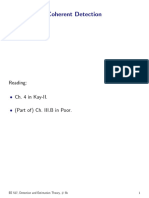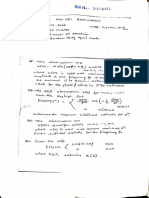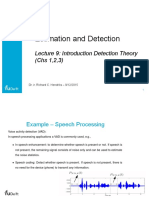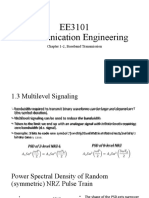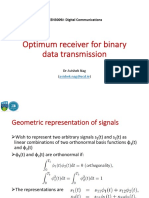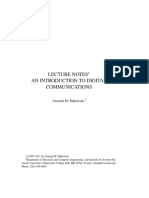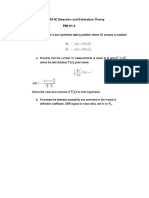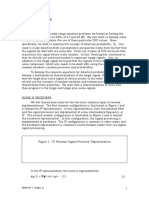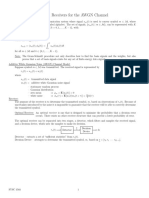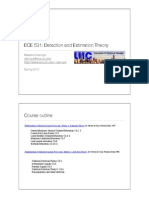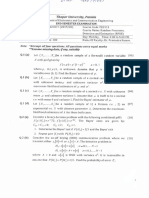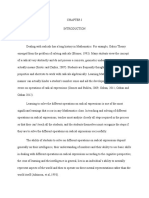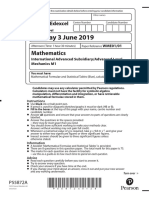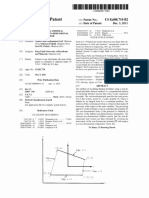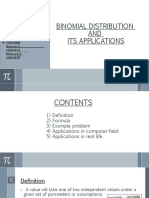0% found this document useful (0 votes)
81 views25 pagesRandom Signal Detection Techniques
The document discusses binary detection of random signals in noise. It makes the following assumptions:
1) The target signal is a zero-mean Gaussian random process with a known covariance.
2) The noise is white Gaussian noise with a known variance, independent of the signal.
It describes the NP detector, which computes the energy in the received data and compares it to a threshold. The test statistic follows a chi-squared distribution. It then generalizes the approach to signals with an arbitrary covariance matrix rather than just a variance.
Uploaded by
ErdemCopyright
© © All Rights Reserved
We take content rights seriously. If you suspect this is your content, claim it here.
0% found this document useful (0 votes)
81 views25 pagesRandom Signal Detection Techniques
The document discusses binary detection of random signals in noise. It makes the following assumptions:
1) The target signal is a zero-mean Gaussian random process with a known covariance.
2) The noise is white Gaussian noise with a known variance, independent of the signal.
It describes the NP detector, which computes the energy in the received data and compares it to a threshold. The test statistic follows a chi-squared distribution. It then generalizes the approach to signals with an arbitrary covariance matrix rather than just a variance.
Uploaded by
ErdemCopyright
© © All Rights Reserved
We take content rights seriously. If you suspect this is your content, claim it here.
/ 25


